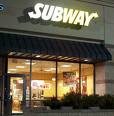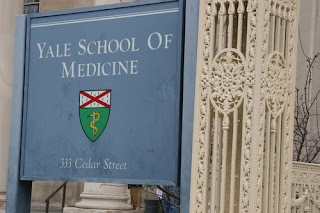So what’s all the fuss over Michelle Obama’s Let’s Move campaign to end childhood obesity, and will it make a difference? Of course, it’s too soon to know for sure (it just launched last month), but early signs indicate more talk than action and deafening silence on corporate marketing practices.
The most obvious problem is framing the issue around obesity, which implies a couple of troubling assumptions. One, that skinny kids are just fine, no matter what garbage they are being fed, and two, that exercise, which has long been a convenient distraction, will continue to be so.
What is Let’s Move?
I highly recommend spending a few minutes perusing the Let’s Move website, which is simple, but informative in describing the campaign. (For a more detailed description, read the press release.) While the name Let’s Move implies a program all about exercise, in fact 3 of the 4 components have to do with food, which leads me to wonder why the White House wanted that to be less obvious. According to the home page:
Let’s Move will give parents the support they need, provide healthier food in schools, help our kids to be more physically active, and make healthy, affordable food available in every part of our country.
All laudable goals indeed, but notably absent is any criticism of the billions of dollars a year Big Food spends successfully convincing both parents and children to eat highly processed junk food and sugary beverages. Michelle Obama may be able to withstand the call of the Happy Meal, but most parents aren’t so lucky to have a White House chef at their disposal.
To her credit, the First Lady is saying many good things about parents needing more support. Also, for the first time I heard the phrase “food desert” uttered on national TV. So she really does seem to understand that it’s not all about education or personal responsibility.
But how exactly will Mrs. Obama and her husband attempt to end childhood obesity “within a generation.” First is the formation of yet another task force. As the President’s memo explains, members of the Task Force on Childhood Obesity are to include the Secretaries of the Interior, Agriculture, Health and Human Services, Education, the Director of the Office of Management and Budget, and the Assistant to the President and Chief of Staff to the First Lady. Heavy hitters yes, but might they have just a few other items already on their to-do list?
Also, in key language, the memo explains that “the functions of the Task Force are advisory only,” meaning that this body, at the end of the day (or many months), will only make recommendations for another body (Congress?) to then maybe, someday, consider.
Do We Really Need Another Task Force?
The Obama Administration may be surprised (since they are calling it the “first ever”) to learn that theirs is not the first federal task force on this issue. The previous administration had a few failed attempts. We already tried the Task Force on Media and Childhood Obesity, which the Federal Communications Commission spearheaded. Perhaps it never really went anywhere thanks to its members, who included the likes of Coca-Cola, McDonald’s, and Disney.
Then there was the Food and Drug Administration’s Obesity Working Group, which was broader than just childhood obesity, and whose pathetic achievement was the startling discovery (and accompanying silly web-based tool) that “calories count.”
But given that we really can’t count anything tried under the previous administration, I am willing to wait and see if this task force can come up with something better. It certainly can’t be any worse than the lame “Small Steps” program (still online).
And let’s not forget the still active Interagency Working Group on Food Marketed to Children, which is comprised of officials from four agencies: the Federal Trade Commission, the Centers for Disease Control and Prevention, the Food and Drug Administration, and the U.S. Department of Agriculture. In December of last year, this body released “tentative proposed nutrition standards” (for food products the government says are A-OK to market to kids) and is planning a final report with recommendations (for voluntary standards) to Congress this July. (Read author and fellow blogger Jill Richardson’s excellent description of its public panel and proposed standards)
This is the historical backdrop into which Michelle Obama now brings us Let’s Move. It’s not as if we haven’t been here before; she’s building on many failed attempts. But let’s take a closer look at one of the four Let’s Move components – school food.
How to Improve School Nutrition?
Under the “Healthier Schools” tab of the campaign’s website, I recognize a few programs that have been out there for some time. For example, the underfunded Healthier US School Challenge and the ineffective Team Nutrition program, both under the U.S. Department of Agriculture, that agency whose number one mission is to prop up Big Agriculture. (The USDA also happens to be in charge of school nutrition and other food assistance programs, which has never proven to be a good combination.)
A few things are new under Let’s Move, including doubling the number of schools that meet the Healthier US Schools Challenge and adding 1,000 schools per year for two years after that. And the President proposes to increase the federal budget by $1 billion annually to improve the quality of school meals. This sounds impressive, but as school lunch expert and Chef Ann Cooper pointed out in a recent Washington Post article, a mere 10 percent increase is a drop in the bucket. Currently, we feed 31 million students a day on $9.3 billion, which amounts to only $2.68 per meal. When was the last time you ate a decent lunch less than 3 bucks? (No, the dollar menu meal doesn’t count.)
And nowhere is any mention of the ongoing problem of competitive foods, which is government doublespeak for Coke and Pepsi vending machines in every school hallway, Doritos, Milky Way, and Good Humor sold in school stores, not to mention fast food like Pizza Hut that has taken over many school lunchrooms. Maybe that’s because the Obama Administration has decided that the success of Let’s Move depends in part on “the creation of public private partnerships.” That sounds familiar.
Working With Industry?
Since signing up for the Let’s Move email updates, I haven’t been too impressed. Here are two topics that landed in my in-box last week: Attention Techies! Apps for Healthy Kids Launched Yesterday and Paralympic Games Show All Athletes Can Be Champions. Now please don’t send hate mail; I have nothing against apps or the Paralympics, I just don’t understand how these concepts will solve childhood obesity “within a generation.”
In an especially bad sign, Michelle Obama is speaking at a gathering of the Grocery Manufacturers Association this Tuesday. As I chronicled in Appetite for Profit, GMA, the lobbying arm of packaged foods conglomerates such as Kraft and PepsiCo has a long history of undermining school nutrition standards, among other positive policies.
As another blogger suggests, Mrs. Obama’s own ties to Big Food may explain her deferential treatment of industry. She served on the board of directors of TreeHouse Foods (a spinoff of conglomerate Dean Foods) for two years until 2007, when her husband’s presidential campaign became all consuming. This same blogger predicts that at the GMA meeting:
Mrs. Obama will focus on “the pressing need to pursue comprehensive solutions to combat childhood obesity” and call upon food manufacturers to join these efforts by “providing healthier food options and better information about healthy food choices.”
But Kraft, PepsiCo, Kellogg’s and others have been all over that idea for several years now with their “smart choices” foods and claims of responsible marketing to children through its bogus Children’s Food and Beverage Advertising Initiative.
We won’t hear any scolding or warning aimed at industry. Instead, the First Lady will simply ask the major food corporations to jump on the Let’s Move bandwagon. And they will do so gladly. With no threats looming (for example, that Congress might pass legislation to restrict marketing to kids) Big Food has nothing to fear; quite the contrary, industry gains positive PR in the process. Indeed, not missing a beat, GMA sent the White House a letter of support for the campaign on the same day that Let’s Move launched.
Let’s Move the Corporations Out of Washington
The bottom line for me is that while there are many things to like about Let’s Move and it’s certainly encouraging for a First Lady to talk about access to fresh, healthy food as a national priority, much of it is still rhetoric we’ve heard before.
To turn the talk into real action will take a ton of leadership from President Obama and even more political will from Congress. Most importantly, unless and until the ubiquitous junk food marketing stops, both in schools and out, very little of substance will change and we will be back here once again with the next administration’s childhood obesity task force.
Let me know what you think.
Postscript (3/17): Michelle Obama tells GMA curb junk food marketing to kids, wants more “healthy food” marketing instead. Read about her talk on Marion Nestle’s blog and see the transcript.




























